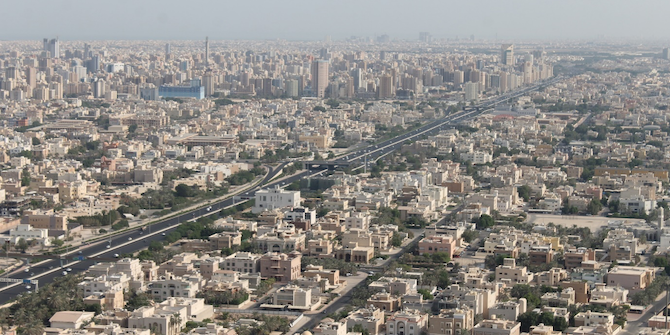by Andri Ottesen

Even though geographically different, Kuwait and Norway have many similarities in terms of their wealth accumulation, economy, and population. As of the end of 2022, Norway had a population of 5.5 million, whereas Kuwait had close to 4.3 million residents. Both nations are heavily reliant on oil production to generate wealth, with Kuwait ranking 10th and Norway 13th in terms of wealth derived from such production. Kuwait’s crude oil reserves account for 6.1% of the world’s reserves—the 6th highest in the world. Petroleum production accounts for over half of Kuwait’s GDP, 92% of its export revenues, and 90% of its governmental income. In comparison, Norwegian oil reserves only account for 0.3% of world reserves, or only 18th in the world. However, Norwegians have invested their proceeds from oil more prudently, as they have accumulated a 1.1 trillion-USD sovereign wealth fund, compared with the 0.8 trillion-USD sovereign fund in Kuwait. In terms of GDP per capita (adjusted for purchasing power), these countries are also similar, with Norway having USD 78,128 vs. USD 51,528 GDP per capita for Kuwait, according to IMF estimates for 2022.
One of the reasons why Kuwait has a lower GDP per capita than Norway is the high number of relatively low-paid ex-pats living in Kuwait. Expats make up 70% of Kuwait’s population, of which one-fourth are low-paid domestic workers, which is equivalent to one domestic worker for every two Kuwaiti citizens. Norway, on the other hand, has a very homogeneous population, with only 20% of the population being immigrants or first-generation. In Norway, half of the immigrants are now citizens—something that would be next to impossible in Kuwait. When it comes to car ownership, the rate is 2.3 million in Kuwait vs. 3.4 million in Norway. That is 0.6 cars per person for Norway vs. 0.5 for Kuwait. The reason Kuwait has a lower number can be explained in terms of restrictions on the acquisition of driving licenses for expats, who only own about 500,000 cars. Kuwaiti citizens are about six times more likely to have a car than the expats living there. Surprisingly, the lower number of cars in Kuwait has not led to lower CO2 emissions than in Norway. Kuwait emits 21 tCO2e/person, with transport being the third-highest greenhouse gas (GHG)-emitting sector. Ground transportation only accounts for 12% of the total release of GHGs. Although this percentage might appear low in comparison to other sectors, one should keep in mind that the emissions per capita in Kuwait are ranked the second highest in the world (after Qatar) and are about three times higher than the European Union average. This ratio is also valid for Norway, an oil-producing country, which emits 6.7 tCO2e/person.
One reason for this stark difference is that Norway has already replaced 20% of its ground transportation fleet with Electric Vehicles (about 800,000 EVs), with plans for 100% replacement. As a result, Norway achieved a 3% permanent reduction in the country’s release of GHGs. As this transition has yet to take place in Kuwait, and EVs on Kuwaiti streets only account for a fraction of a percent (around 300 at the end of 2021 and 600 at the end of 2022), mass EV adoption offers a tremendous opportunity to lower GHG emissions in Kuwait.
EVs, as a replacement for Internal Combustion Engine (ICE) cars, offer a viable solution to Kuwait’s pledge to lower GHG emissions. This would allow progress to be made towards both the United Nations, through their Nationally Determined Contributions (NDCs). But also for their own national vision for the State of Kuwait by 2035, especially towards achieving its sustainability goal number 13, which states that Kuwait must ‘take urgent action to combat climate change and its impacts’. Neither the State of Kuwait nor its municipalities offer any financial incentives to buy or own EVs instead of ICE cars. In comparison, Norway offers a long list of incentives, including 1. Import and value-added tax exceptions from the purchasing price 2. Road tax exceptions 3. Ferry and toll-road fee exceptions that are especially beneficial for those who live in suburbs of Oslo and drive in for work every morning 4. Permission to drive EVs on designated fast lanes for buses. As a result, buying and owning EV in Norway is cheaper than ICE cars and for those who live in the suburbs or vicinity of large cities, it will save them considerable time and money in getting to and back from work, assuming they work in downtown areas. If similar incentives, taxations, and infrastructure would be put in place in Kuwait, many Kuwaiti drivers would prefer their EV over ICE. In a recently published articles by the author, we go over ten main reasons why the adaptation of EVs is so low.






